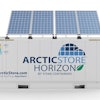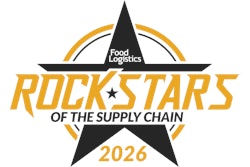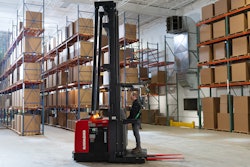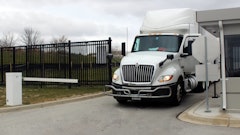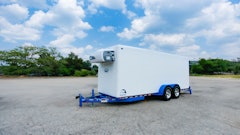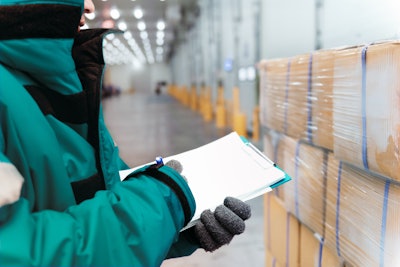
In a sweltering summer or during a sudden power outage, a cold storage facility can go from safe to critical in seconds. With rising global temperatures and mounting refrigerant regulations, today’s operators face a complex set of challenges. Keeping systems running in tough conditions isn’t just about durability anymore, it’s about designing smarter, more energy-efficient solutions that can also meet the demands of evolving policy.
So, how can facilities maintain uptime in extreme environments and prepare for the next wave of refrigerant rules all at the same time? The answer starts with treating refrigeration not as a utility, but as a strategic investment. That means prioritizing flexible design, clean refrigerants and smarter controls that balance sustainability with reliability in the face of climate and policy volatility.
Prioritizing uptime in extreme environments
2024 was confirmed to be the warmest year on record globally, resulting in refrigeration facilities being pushed to their environmental limits. Heat waves, high humidity, corrosion risk and unstable power grids are increasingly frequent, placing a growing strain on systems that may not have been built for such conditions.
Facilities located in coastal regions, high altitudes, or areas prone to extreme heat now require more resilient system design not only to preserve uptime, but also to protect long-term asset performance. Operators that design with local environments in mind (not just regulatory compliance) are far better positioned to avoid costly downtime and extend system life. Integrating environment-resistant materials, advanced cooling strategies and remote diagnostics will help operators get ahead of failures instead of reacting to them. But resilience alone isn’t enough. To truly protect uptime and keep costs in check, facilities must also focus on energy efficiency, starting with leveraging real-time insights.
Balancing energy efficiency with real-time data
Beyond sustainability, energy efficiency is one of the best ways to protect uptime. When systems are overworked or operating inefficiently, they’re more likely to break down, especially during peak demand or electrical fluctuations.
Digitalization is transforming how cold storage facilities monitor and manage performance. Sensors, remote access platforms and cloud-based dashboards are enabling operators to track system behavior 24/7, flag anomalies early, and adjust settings on the fly.
Data‑driven control systems and smart diagnostics can yield 5-12% energy savings in industrial refrigeration systems, simply by making adjustments such as slightly raising the temperature setpoint or improving airflow.
This shift toward real-time visibility is especially valuable for facilities operating in extreme environments. When operators can quickly spot issues they’re better equipped to prevent downtime before it happens. These insights can also help the business at large by informing strategic decision-making. And because energy use is often tied to system strain, efficiency also protects the bottom line. As electricity prices climb and cooling demands grow, systems that use less energy are cheaper to run and less likely to break down. However, with new refrigerant rules on the horizon, operators must also ensure compliance readiness before regulations force costly changes.
Preparing for refrigerant regulations before they hit
The global shift away from high-global-warming-potential (GWP) hydrofluorocarbons (HFCs) is well underway. In the United States, the AIM Act is mandating a phasedown of HFCs by 85% over the next 15 years, and similar policies are being implemented across the EU and other markets via the F-gas regulation and the Kigali Amendment.
Facilities that wait too long to make the switch may run into problems like rising refrigerant costs, outdated equipment, or trouble finding replacements. That’s why more operators are turning to natural refrigerants like CO₂, ammonia and hydrocarbons, which have little to no climate impact and are more likely to meet future regulations.
The benefits go beyond compliance. One study found that cold storage systems using alternative refrigerants reduced carbon emissions by 9–25% compared to conventional HFC-based setups. And as system designs improve, many are combining natural refrigerants with smarter controls and energy-saving features to boost both performance and reliability.
However, even the best equipment falls short without skilled people to run and maintain it.
Don’t overlook your workforce
All the innovations in refrigeration design and energy optimization means nothing if operators and technicians aren’t equipped to maintain and manage these systems. With the rise of natural refrigerants and intelligent technologies, new training requirements are necessary.
Cold storage operators must consider investing in upskilling programs that align with their technology roadmap. Whether through third-party training courses, certification programs, or internal safety refreshers, a well-trained team is essential to ensuring uptime, efficiency and compliance. The bottom line is about keeping your people safe and your operations running smoothly (with the added benefit of staying competitive.)
Looking ahead: A checklist for operators
For cold storage facilities that can withstand extreme conditions and stay compliant with evolving regulations, operators should consider the following:
● Review current systems to spot aging equipment, refrigerant risks, and areas vulnerable to extreme weather.
● Explore upgrade options that use natural refrigerants or mix old and new technology.
● Install smart controls and monitoring tools to catch issues early and reduce energy use.
● Design with real-world conditions in mind like humidity, power reliability, elevation and corrosion.
● Make sure staff are trained on how to handle new refrigerants and smarter systems.
● Put backup plans in place for power outages or unexpected system failures.
● Use performance data to guide decisions about maintenance, upgrades and energy efficiency.
In cold chain logistics, reliability and resilience are non-negotiable. Operators who modernize now will be better positioned to meet evolving customer needs, workforce safety, regulatory expectations and sustainability goals. Those that wait may find themselves forced into costly, reactive changes at the worst possible time.

